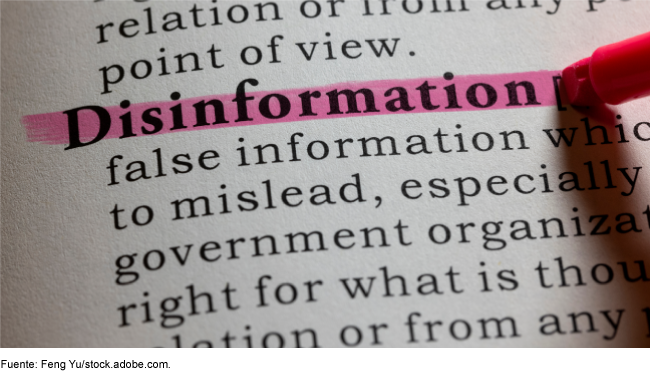Foreign Disinformation: Defining and Detecting Threats
Fast Facts
The Departments of State, Homeland Security, and Defense are working to define and detect foreign disinformation. This Q&A report describes their efforts. We also discussed their relevant legal authorities. This report is the first of two that examine U.S. agencies' efforts to counter foreign disinformation threats, including identifying and publicizing threats.
Russia, China, and Iran are the main foreign governments spreading disinformation, U.S. agencies report. For example, Russia has likely backed DC Weekly, which impersonates a U.S. news site but spreads Russian propaganda, researchers and Homeland Security officials say.

Highlights
What GAO Found
Foreign disinformation—defined in this report as false claims or misleading information deliberately created or spread by foreign actors to deceive people—threatens U.S. national security. Disinformation can weaken democracies while increasing political instability and conflict among people, reports the Office of the Director of National Intelligence (ODNI). Tactics to create or spread disinformation include employing foreign actors behind fake social media accounts and using websites with both hidden operators and hidden connections to foreign governments.
U.S. agencies have reported that foreign governments have conducted disinformation campaigns to undermine U.S. foreign policy interests and disrupt civil discussions in the United States and abroad in recent years. These foreign governments spread disinformation in a variety of ways, including through state-run or sponsored propaganda, social media, and artificial intelligence—such as deepfakes, which are videos, photos, or audio recordings that appear real but have been manipulated with artificial intelligence.
U.S. federal entities that conduct activities to counter disinformation spread by foreign actors include the Departments of State (State), Homeland Security (DHS), and Defense (DOD).
To define foreign disinformation and related terms, most U.S. agencies we spoke to use the National Intelligence Council's IC Lexicon for Foreign Malign Influence, which aims to standardize terms and add precision to disinformation analysis. To detect foreign disinformation, State, DHS's Office of Intelligence and Analysis (I&A), and DOD monitor both public and nonpublic sources of information and use a variety of methods to detect disinformation targeted at audiences overseas or domestically, depending on the agency. For example, State and DHS's I&A analyze social media to identify disinformation and disinformation actors. In addition, all three agencies conduct activities to counter foreign disinformation. Collectively, these activities include identifying, publicizing, and researching disinformation threats as well as educating U.S. and foreign partners or the public on how to recognize and build resilience against disinformation threats. For example:
- According to State officials, State’s Global Engagement Center helps U.S. federal agencies, international partners, and U.S. embassies develop analytic skills, policy responses, and technical capacity to counter foreign disinformation overseas.
- DHS’s Cybersecurity and Infrastructure Security Agency educates the public on the risks of disinformation and partners with state and local election officials to disseminate educational materials to help them identify disinformation, according to DHS officials.
- DOD’s Public Affairs office publishes statements, messages on social media, and press releases with factual information to counter disinformation.
Why GAO Did This Study
GAO was asked to describe U.S. efforts to counter foreign disinformation. This report examines how relevant U.S. government agencies define and detect foreign disinformation threats and the legal authorities these agencies use to counter these threats.
To describe these efforts, GAO interviewed officials from the Department of State, DOD, and DHS, and ODNI. GAO also reviewed agency documents, guidance, and analytical reports to understand threat types and detection sources and techniques used by these agencies.
U.S. agencies counter foreign disinformation created or spread by both foreign governments and non-state actors, such as terrorist groups. However, because many of these agencies' efforts focus on foreign governments, this report primarily discusses disinformation spread by foreign governments rather than by non-state actors.
Recent reports have raised questions about whether the federal government has a clear lead agency to coordinate efforts to counter foreign disinformation and whether existing coordination mechanisms are mature. In our second report, GAO plans to examine these and other issues by evaluating U.S. agency efforts to share information and coordinate their actions to counter foreign disinformation. GAO plans to issue this second report in 2025.
For more information, contact Chelsa Kenney at (202) 512-2964 or kenneyc@gao.gov.
